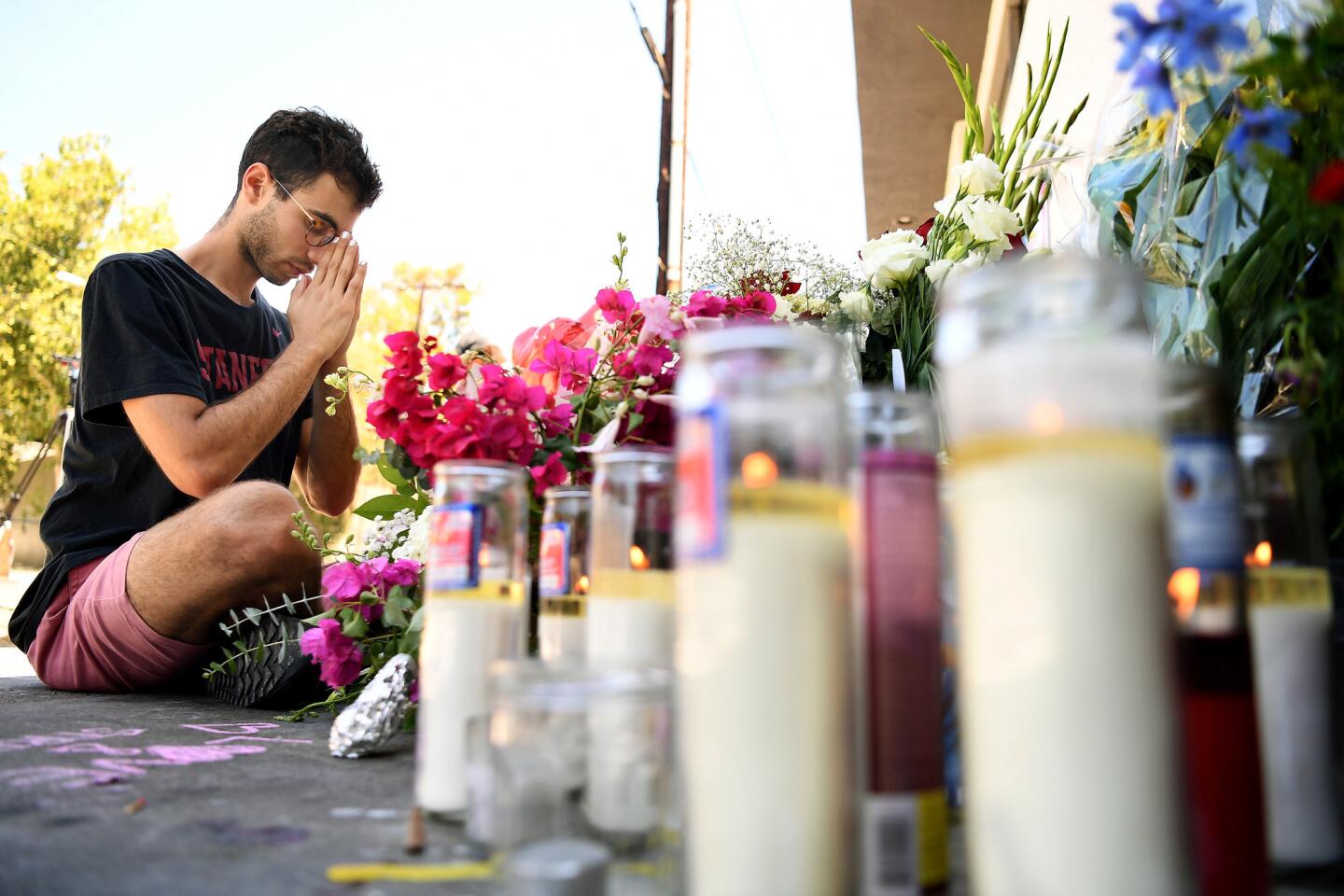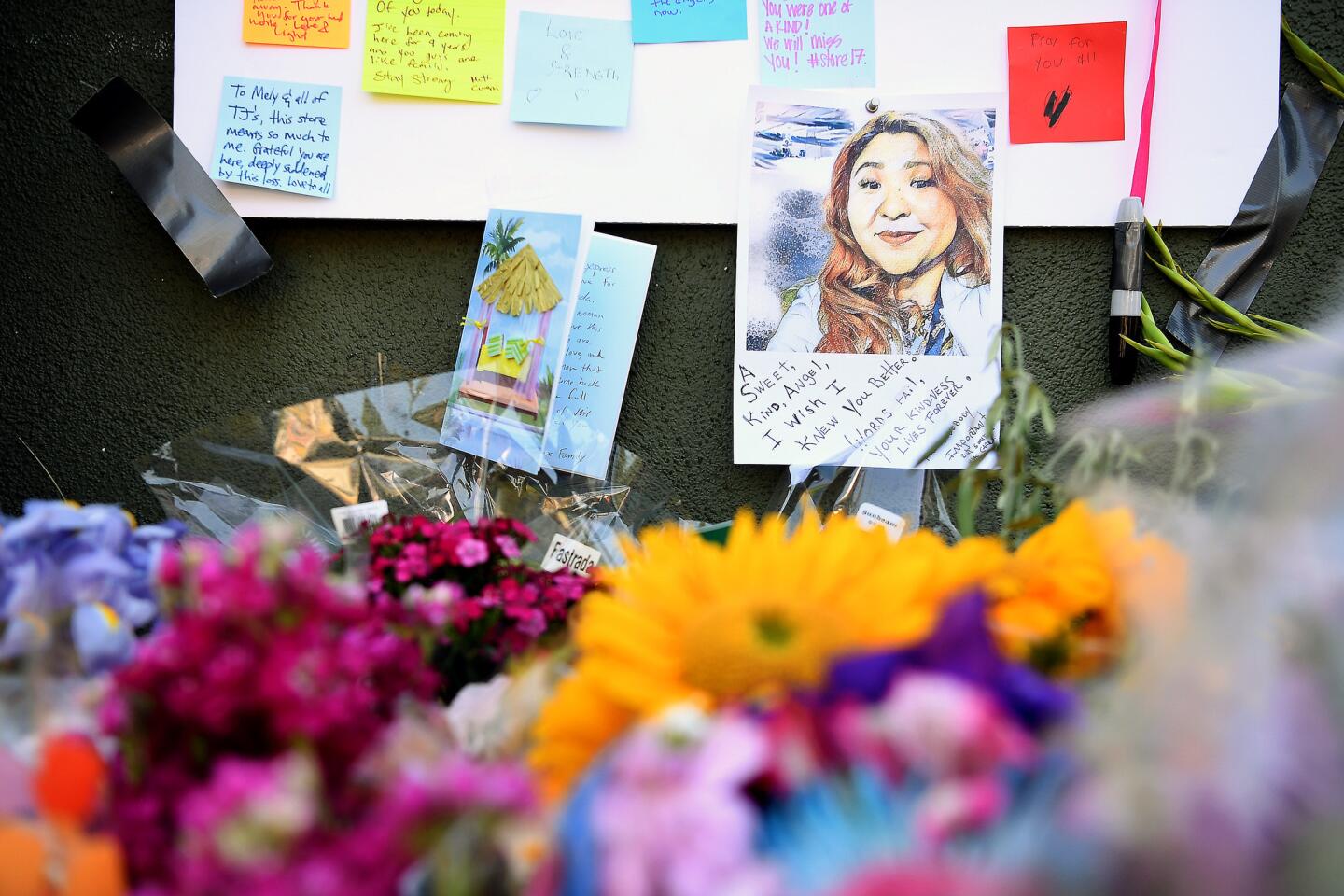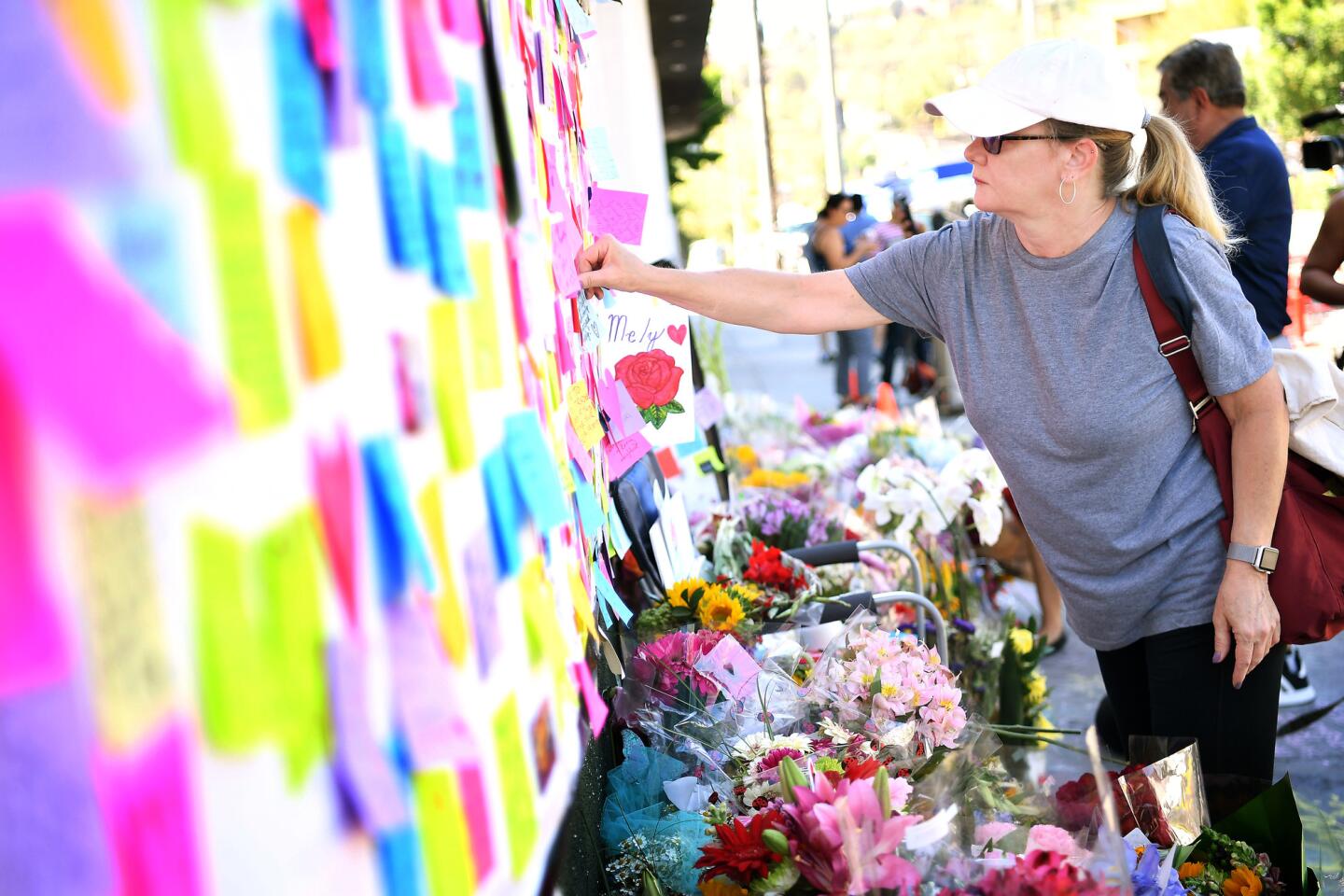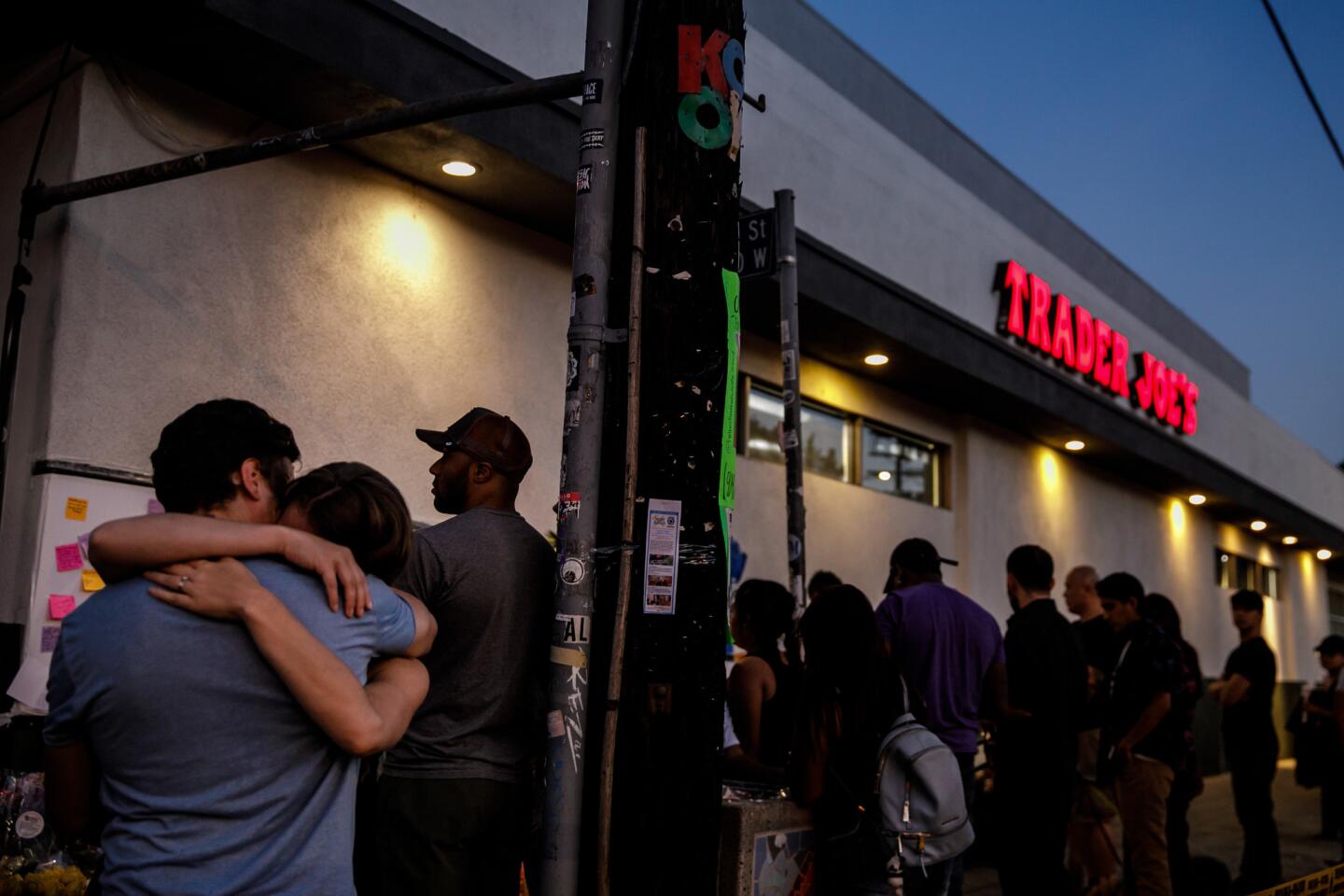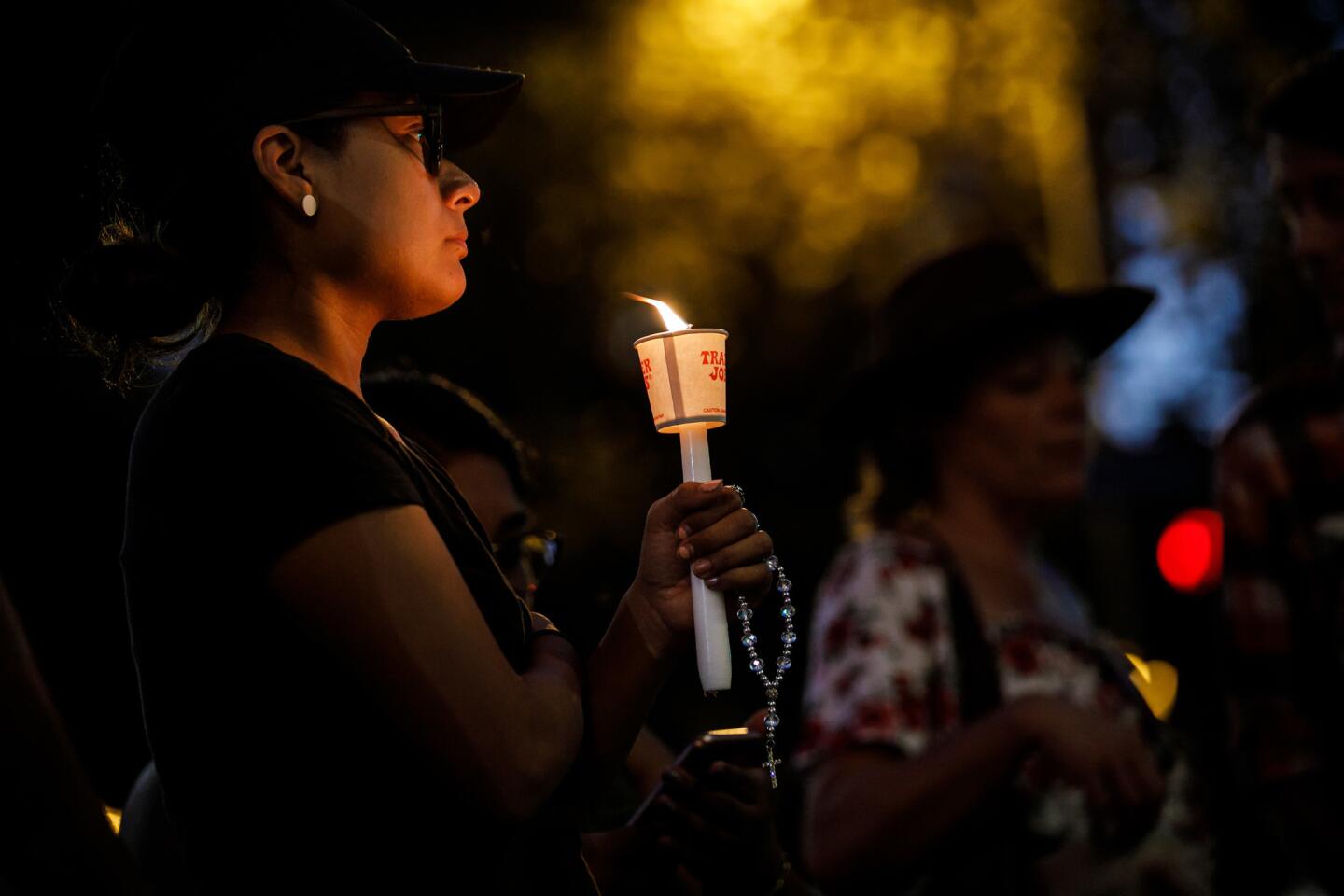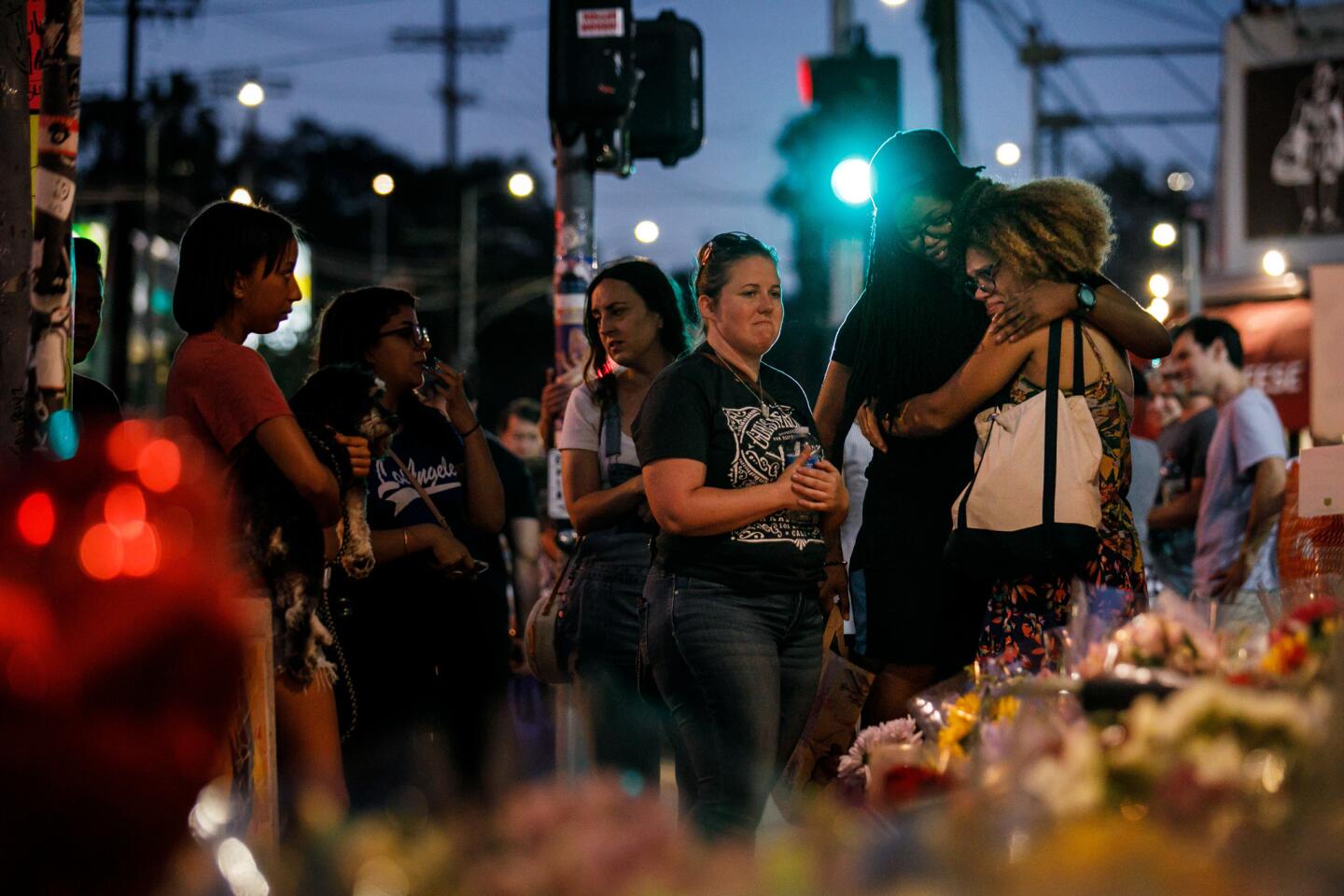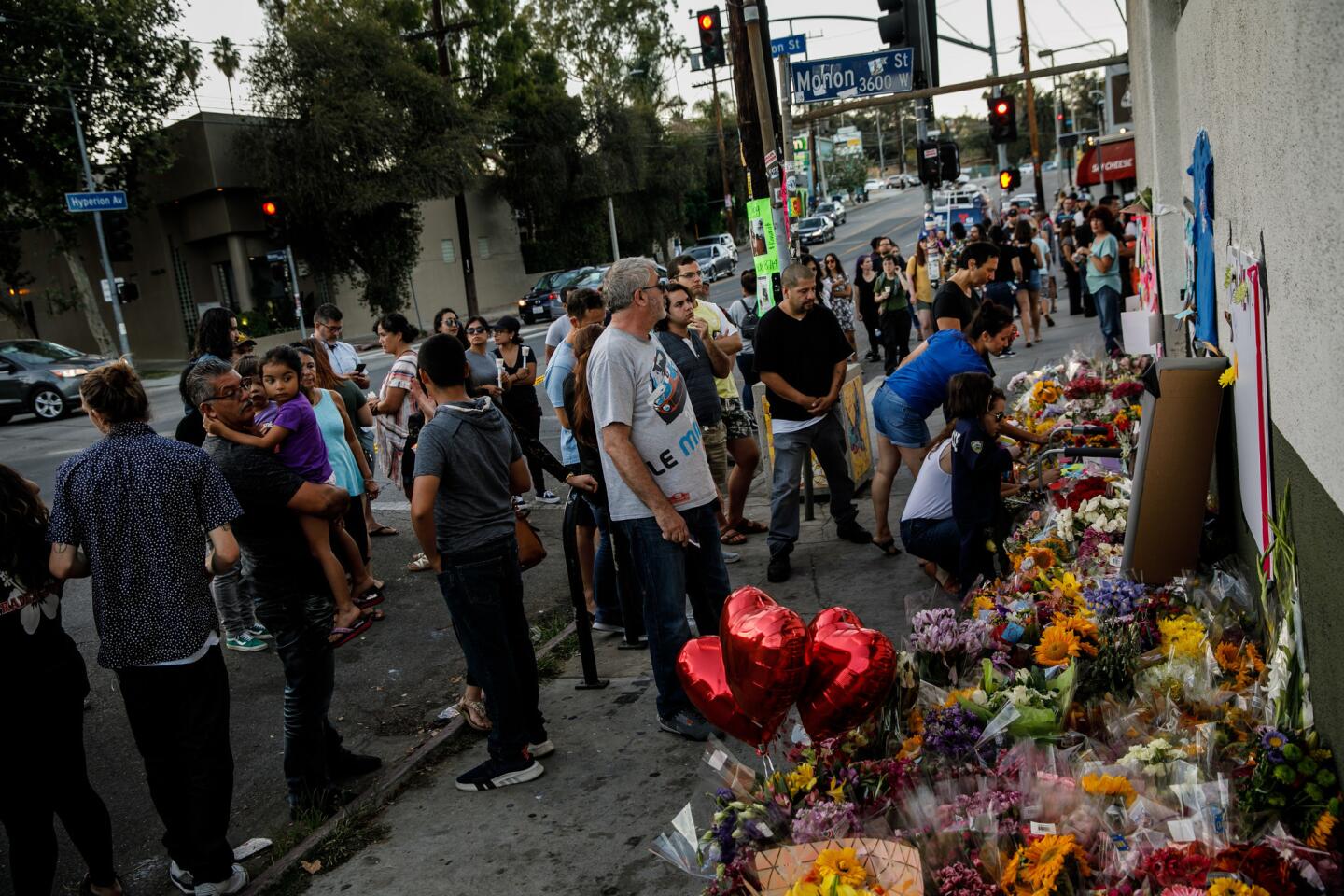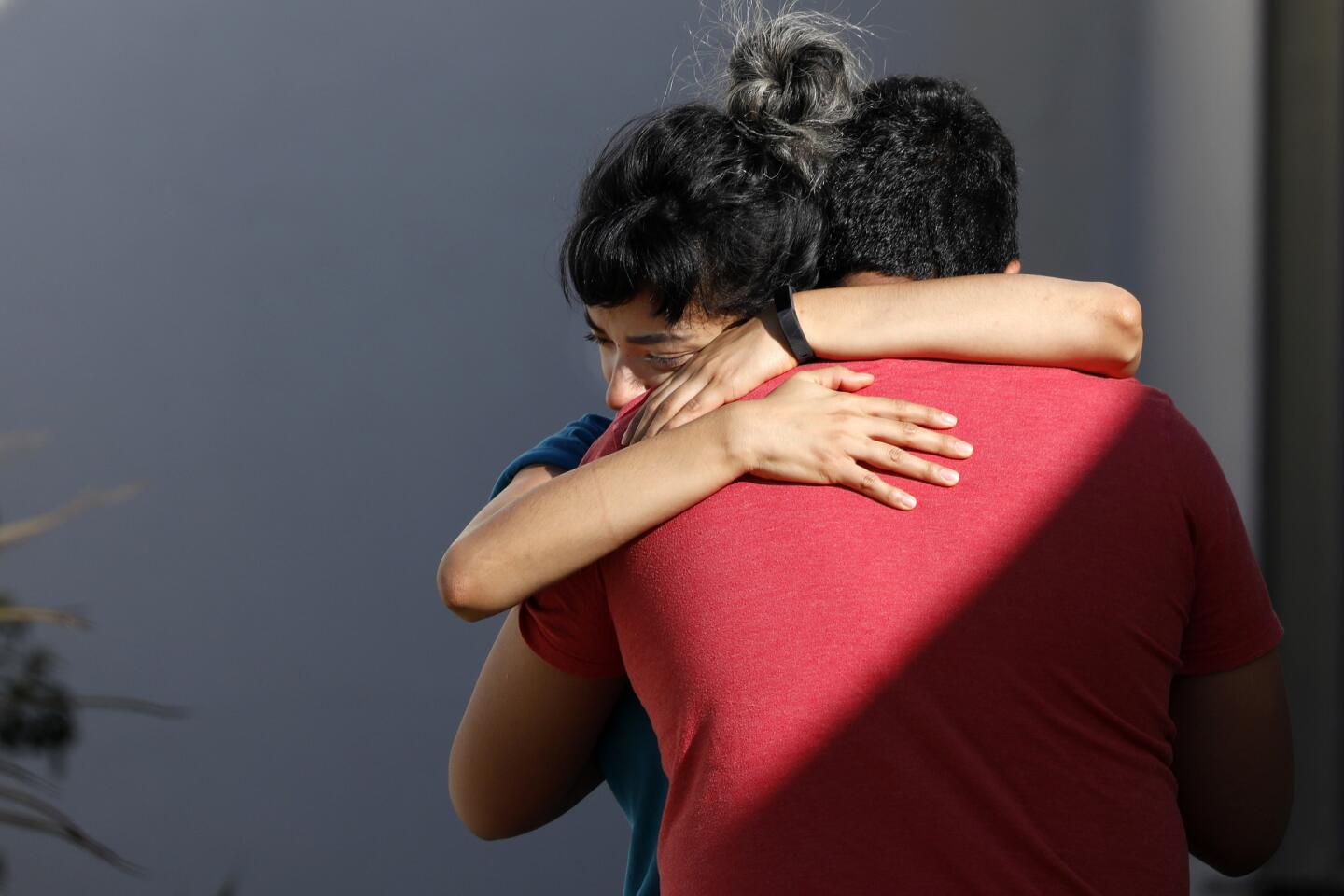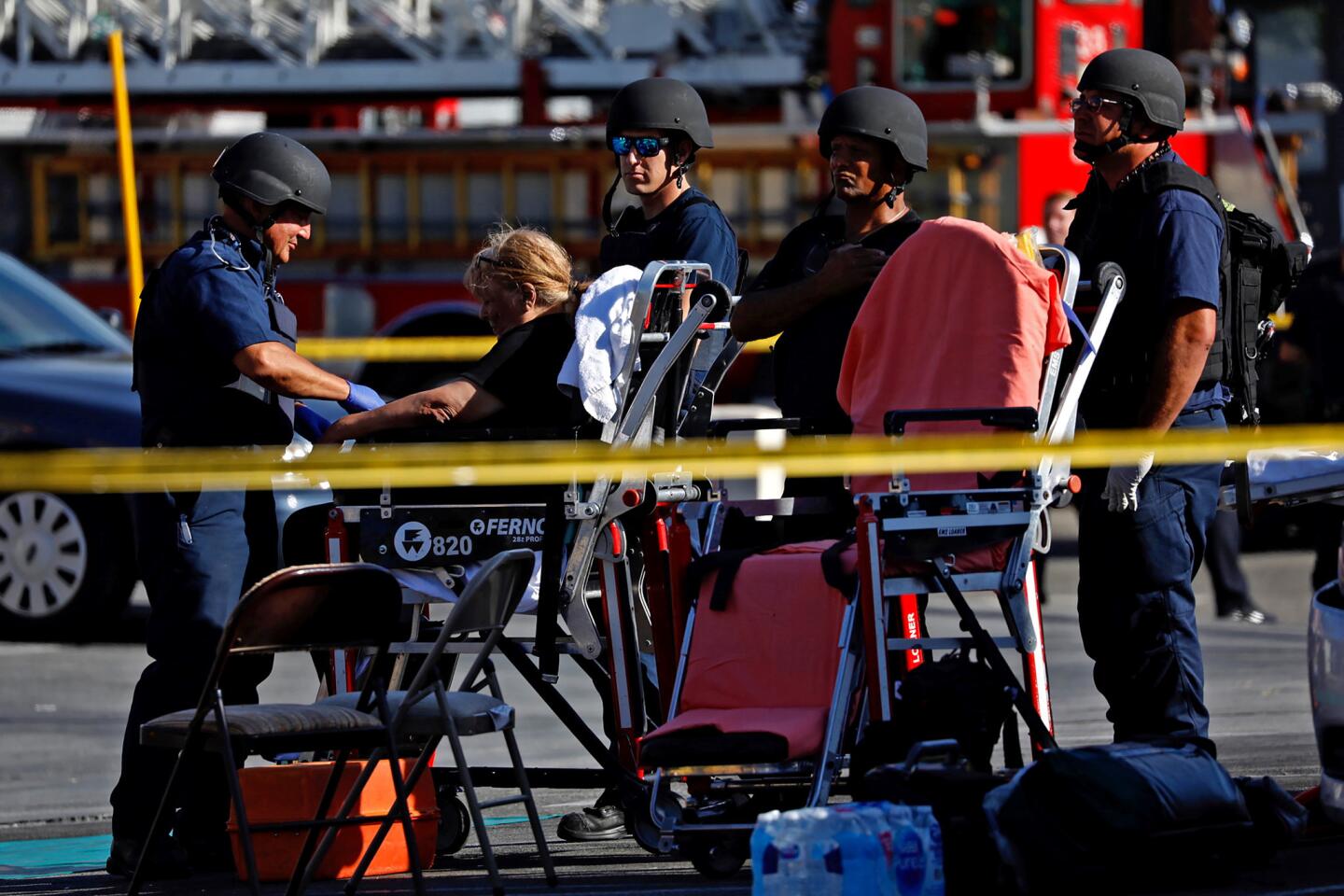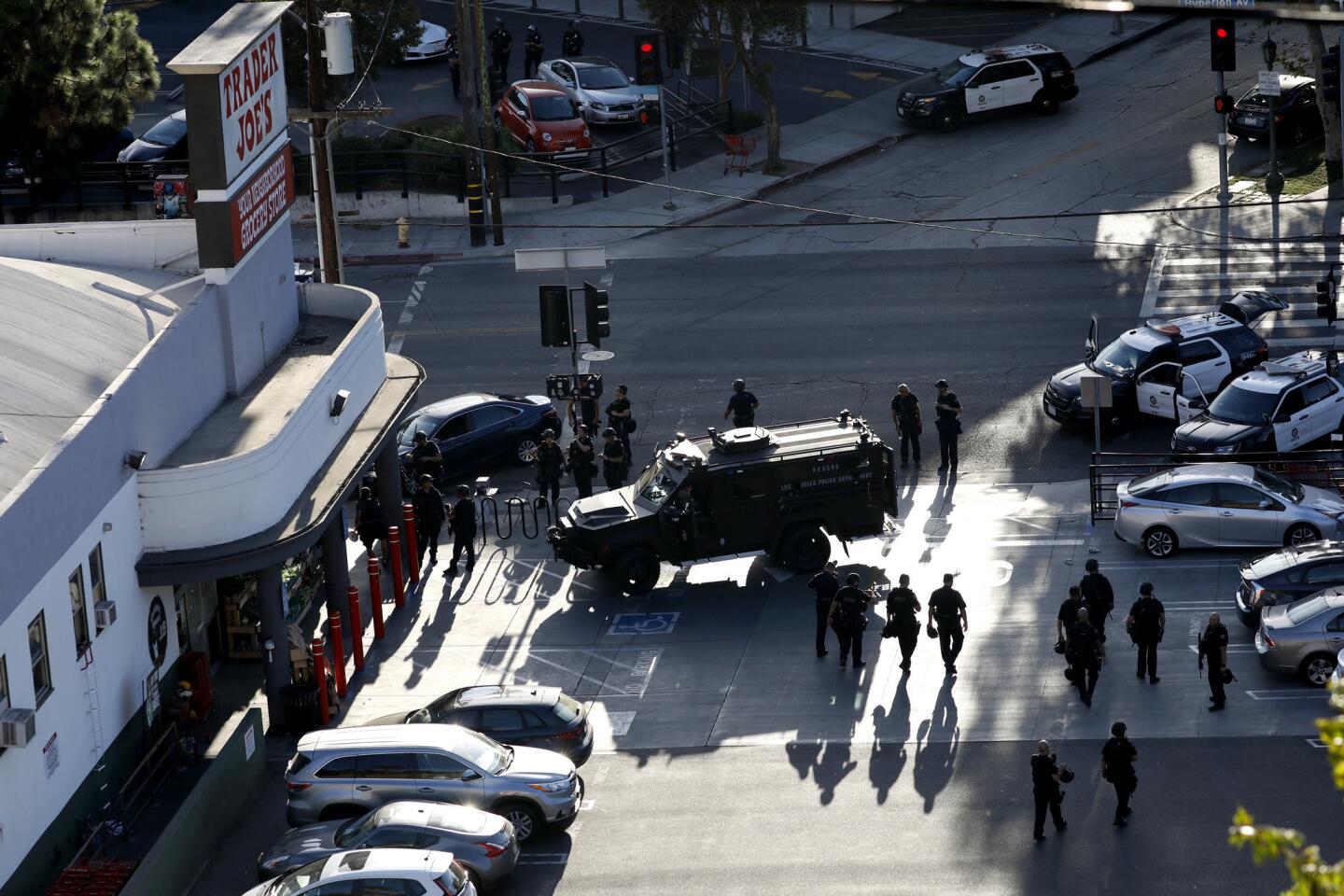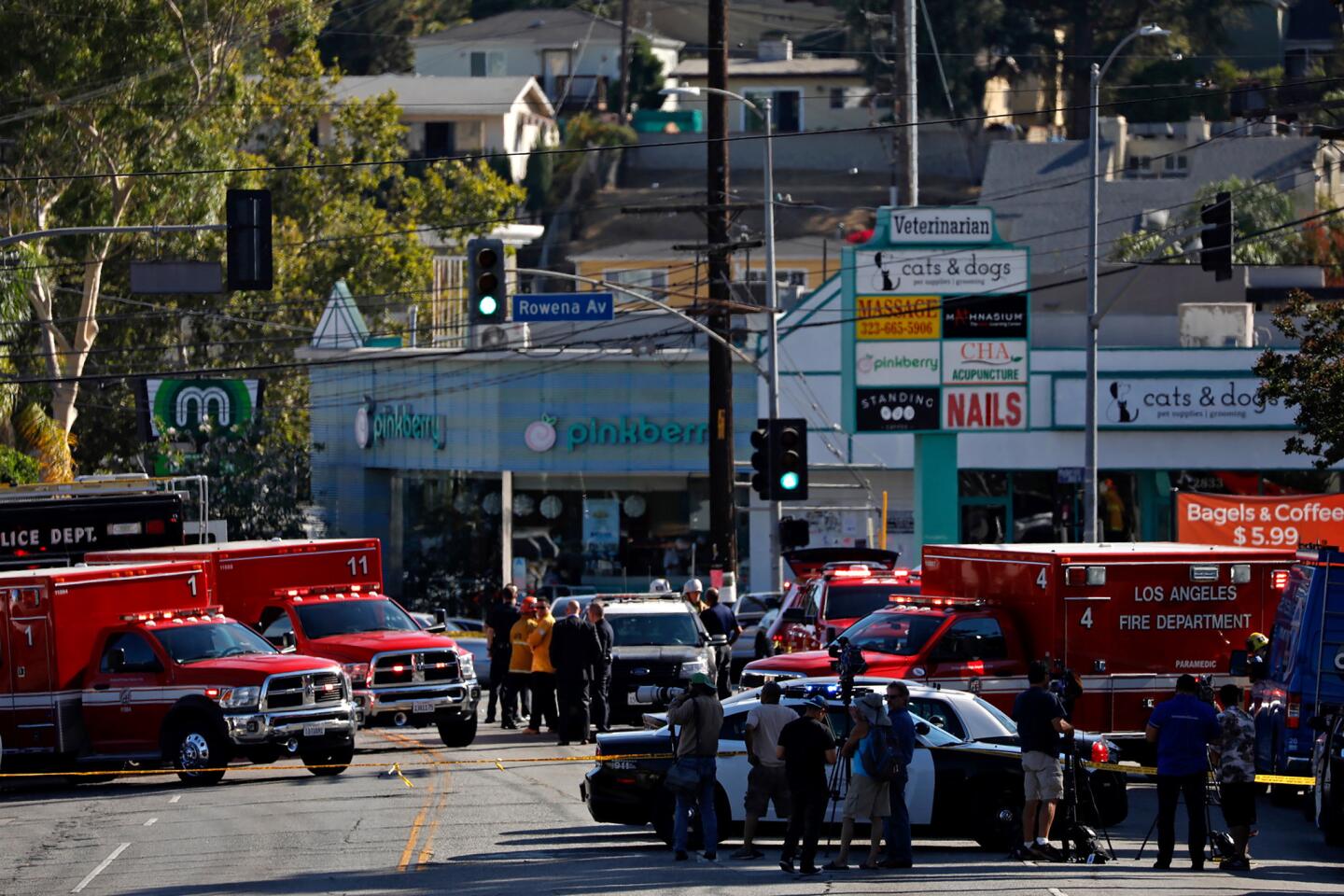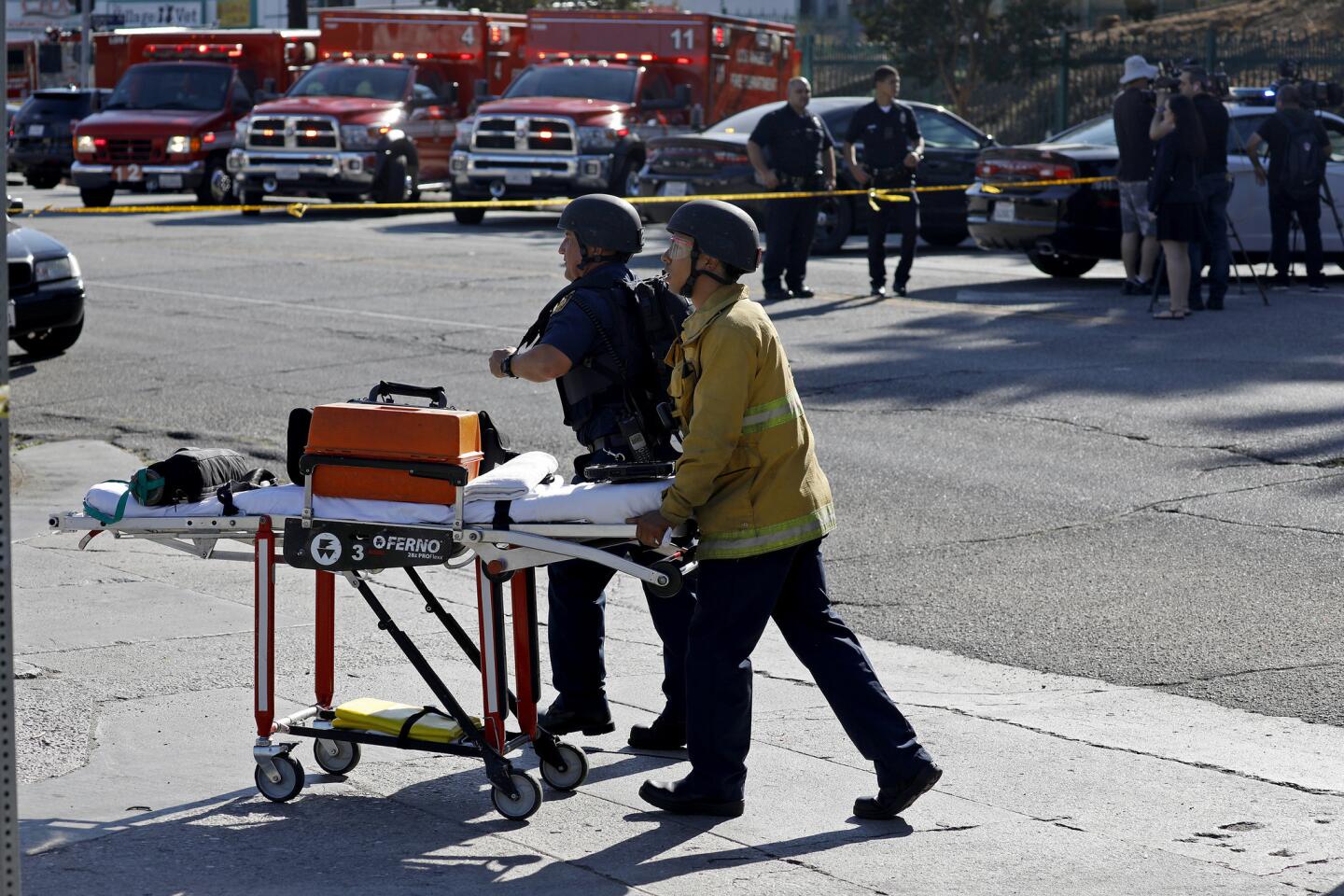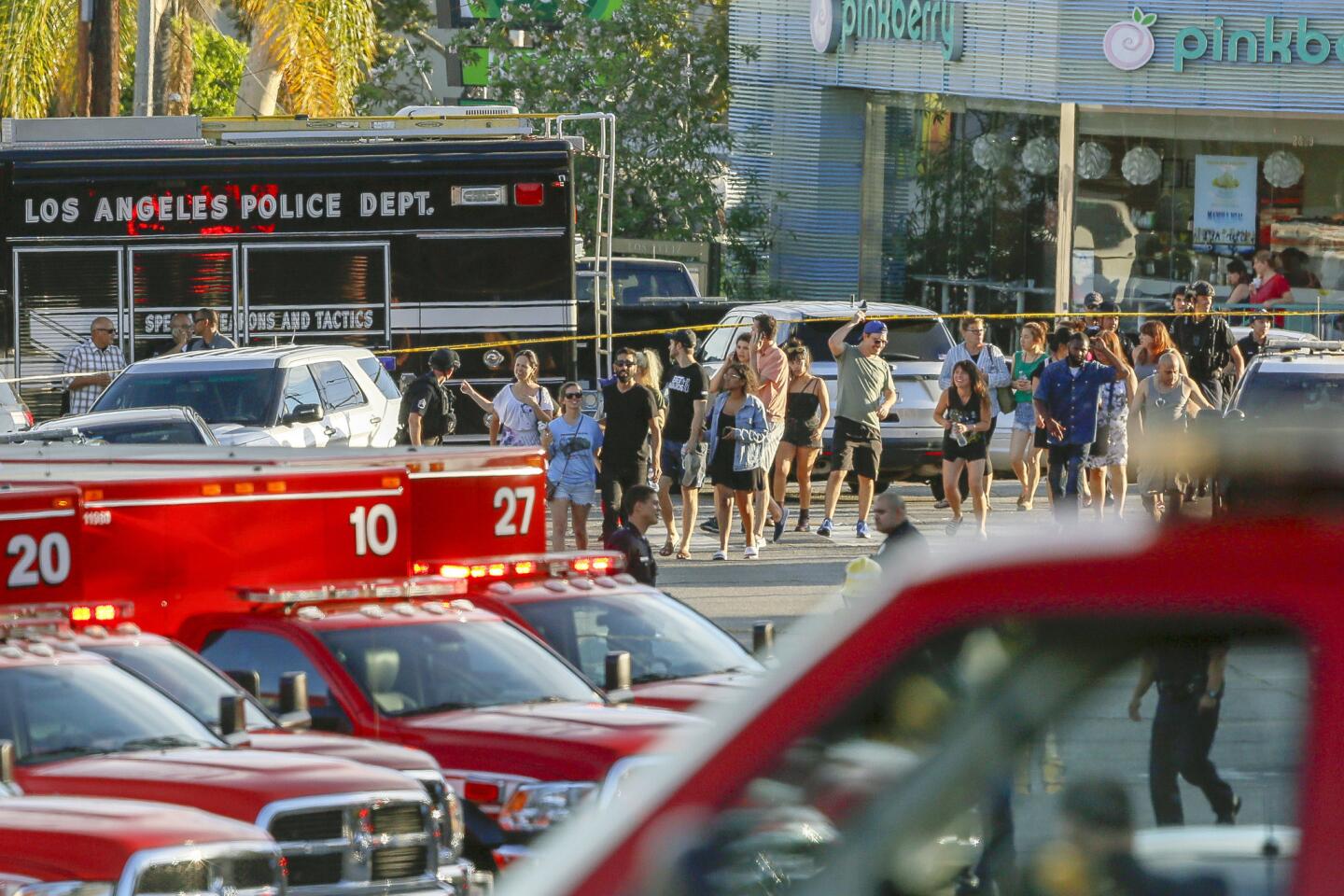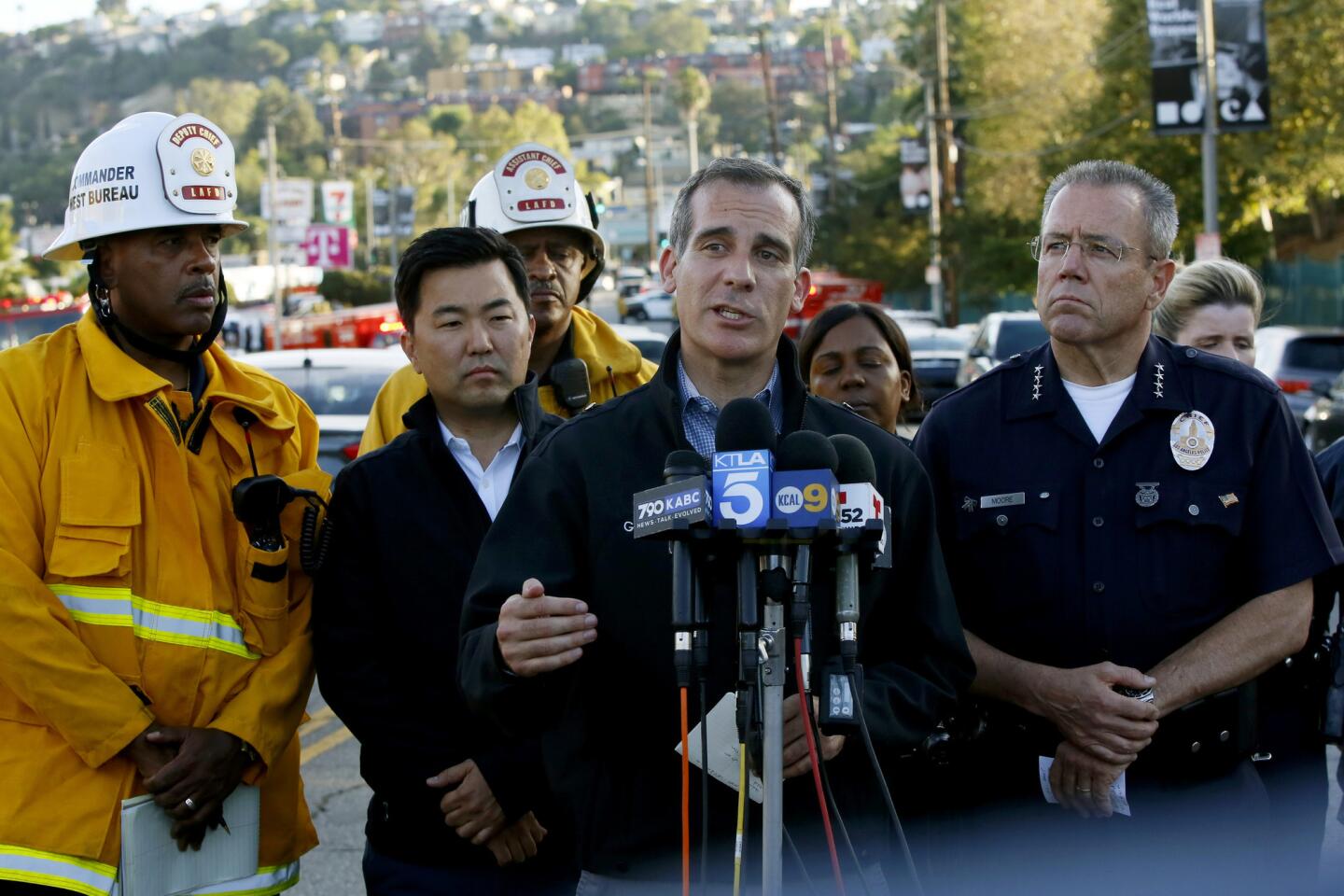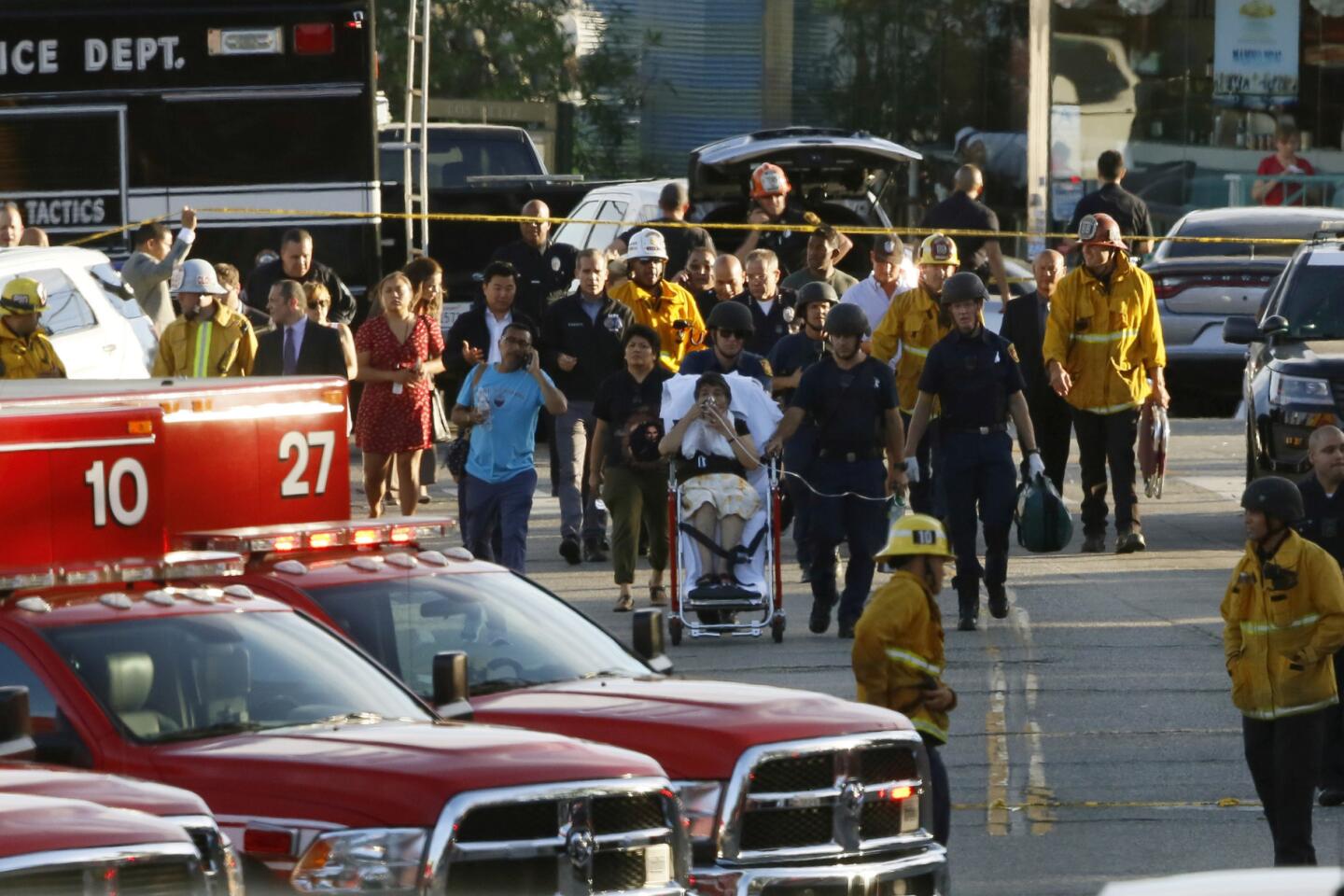A wild chase, a gun battle, then tragedy as officer’s bullet kills Trader Joe’s employee
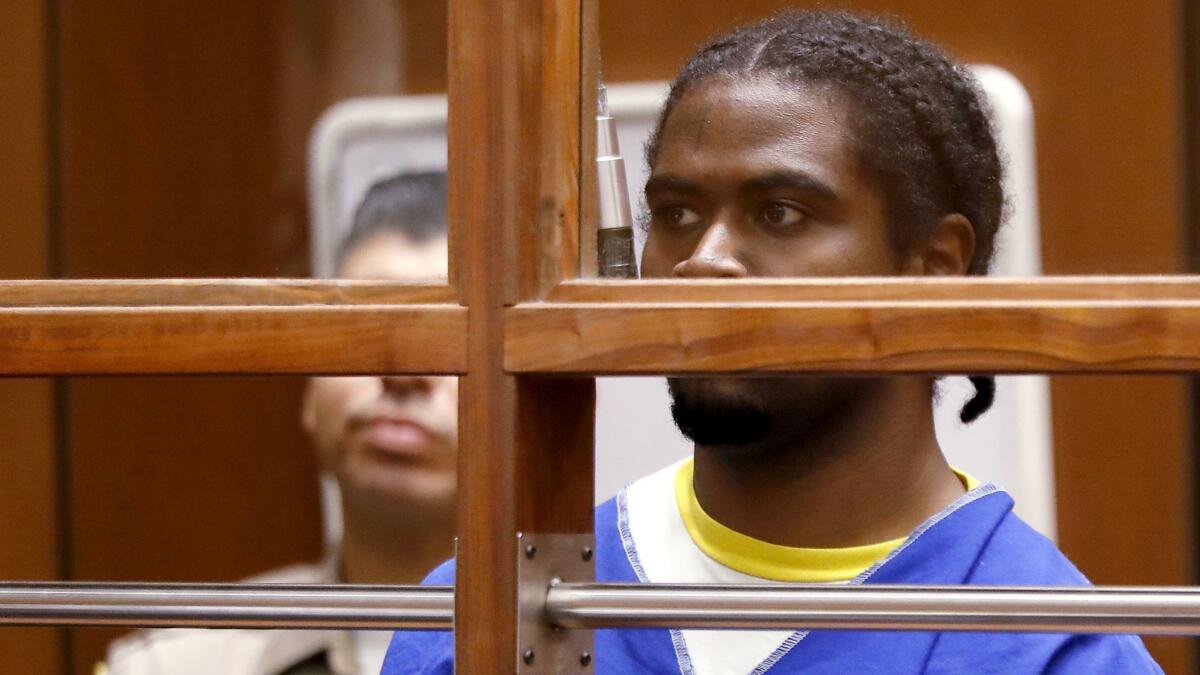
- Share via
Two Los Angeles police officers tore through traffic on Rowena Avenue on Saturday afternoon in a high-speed pursuit of an attempted murder suspect driving a Toyota Camry.
Suddenly, the back window of the Camry shattered.
“Shots fired!” the police officer at the wheel shouted to his partner as he swerved into oncoming lanes. “Broadcast.”
“6A67 shots fired,” she radioed. “Officer needs help.”
Forty-five seconds later, the Camry veered into a utility pole in front of a Trader Joe’s and the driver bolted for the entrance, firing his gun wildly from his hip, according to dashboard and body-cam footage released by the Los Angeles Police Department on Tuesday.

Police release dash cam video footage from the July 21 shooting at a Trader Joe’s market in Silver Lake.
The officers had less than two seconds to react before the gunman fled into a store full of shoppers. But a bad shot could hit a bystander. The video showed a man by the entrance and another behind the wreck, but not who was behind the glass front doors.
The officers opened fire. The suspect was hit in the arm but made it into the store, shooting at least three times at police from inside. A beloved Trader Joe’s manager, Melyda Corado, 27, died in the shootout.
On Tuesday, the police chief announced that one of the officers’ bullets had killed her.
“On behalf of myself and the rest of the department, I want to express my deepest condolences and sympathy to her family and everyone that knew her,” Chief Michel Moore said of Corado. “I know that it’s every officer’s worst nightmare to hurt an innocent bystander during a violent engagement. I spoke with the officers this morning — they’re devastated. They were devastated in the immediate aftermath of this event.”
Moore said she was coming out of the market and was close to the suspect. Gene Atkins, who allegedly had shot his grandmother earlier Saturday, survived the gunshot wound and surrendered to authorities hours later. No one else was injured.
Atkins, 28, was charged Tuesday with 31 felonies, including one count each of murder, kidnapping, two counts of premeditated attempted murder and four counts of attempted murder of a peace officer. He waived his arraignment and is being held on $18.75-million bail.
The chief said he would wait until the investigation was completed before determining what consequences, if any, the officers involved in the gun battle would face internally. But on its face, he said, their decision to shoot at Atkins appeared justified.
“I believe it’s what they needed to do in order to defend the people of Los Angeles, defend the people in that store and to defend themselves,” Moore said. “I ask that you place yourself in these two officers’ positions and ask yourself what would you have done?”
Moore noted that he was releasing details of the shooting along with police dashboard and body camera video of the incident earlier than is typical “in order to frame the circumstances that these officers found themselves in.”
The videos show three perspectives of the chaotic car chase, veering through busy Hollywood and Silver Lake on Saturday afternoon.
At 3:20 p.m., the suspect shot out the back window.
After calling for help, the female officer said: “All right, partner, I got my gun out.”
“Do not, do not shoot,” the male officer responded. “Get distance. We are getting distance.”
The dash camera video then shows the suspect’s car swerving left onto Hyperion Avenue toward Trader Joe’s before crashing head-on into a utility pole.
Seconds later, the police car stops and gunfire can be heard as the suspect springs from his vehicle, holding a weapon, and dashes into the market. It was about that time that one of the officers’ bullets struck Corado, passing through her arm before entering her body, the police chief said.
After the initial exchange of gunfire outside Trader Joe’s, the officers moved to a low wall opposite the market. Atkins allegedly shot three more times at police from inside, striking the wall and a pole near police, Moore said. One round landed with a loud ping.
“Get your head down,” an officer yelled.
The shooting stopped, and the incident, by then a hostage crisis, ended hours later with Atkins’ surrender.
After Moore’s announcement, Mayor Eric Garcetti released a statement supporting the chief’s choice to release the videos and circumstances of Corado’s death.
“Saturday was a dark day for the family of Melyda Corado, and it is our responsibility to shed light as quickly as possible on what happened,” the statement read. “Melyda’s loved ones are entitled to answers — and Angelenos deserve complete transparency in understanding the full circumstances of her death.
“I met with Melyda’s father on Saturday to share my sorrow over his daughter’s death, and he has my commitment to a thorough investigation and helping the family in any way possible — as they take those first, enormously difficult steps toward coping with the trauma of losing such a vibrant, compassionate young woman who was loved by so many.”
The series of events that led to the shooting began hours earlier in South L.A. Police said Atkins had an argument with his grandmother at their home in the 1600 block of East 32nd Street. Atkins shot the woman multiple times before forcing his girlfriend into his grandmother’s Toyota Camry, authorities said.
Police used an anti-vehicle theft system to track Atkins to Hollywood hours later, when he fled.
The decision to engage in a firefight at the busy shopping center led some to question the LAPD’s response, while others were quick to praise the officers for risking their lives in an effort to stop Atkins.
Charles “Sid” Heal, a retired L.A. County sheriff’s commander and expert on law enforcement shootings, said the video reflects the realities of the life-and-death decisions officers face when a suspect fires at them in a public place.
“The suspect created the situation and law enforcement inherited it,” Heal said. “The alternative was to surrender the lives of hostages inside the store, plus he could have killed those officers … you can play the scenario over and over again, but nobody is going to have a better option.”
Heal, a former SWAT supervisor, said Atkins could have entered the store and shot those inside.
“People in a case of a tragic loss of life will look for solutions, but sometimes there isn’t one,” Heal said. “The standard is not perfection. As an officer, if you don’t shoot here, you are risking the lives of hostages and your officers.
“We try to have a clear field of fire, but obviously the suspect has a substantial, even a decisive, advantage if we don’t return fire,” he said. “There is no easy answer.”
Still some were critical of the LAPD’s decision to shoot.
“How are police deciding to open fire in a packed place, in the afternoon, on a Saturday?” asked Jesse Palmer, 38, who was Corado’s neighbor. “It’s not like it’s an empty lot. It’s not like it’s an abandoned warehouse. What sort of protocol is required before you shoot into an area that’s congested and booming with commerce?”
Ed Obayashi, a police shooting expert and Plumas County sheriff’s deputy, agreed with Moore that this is a cop’s “worst nightmare.”
He said the way the officers handled the pursuit was “textbook calm.” But it was risky to shoot given the distance, the backdrop and the moving target.
He said in such cases, officers can get “tunnel vision.”
They might not have even had the time to realize there was a glass door behind Atkins when they fired their last two shots.
“The brain doesn’t process that information that fast,” Obayashi said.
Moore moved far quicker than his predecessors to release footage that usually takes weeks to be made public.
“It is a credit to the police chief that he decided to be so transparent with video and [an] explanation of what his officers did,” said Seth Stoughton, a University of South Carolina law professor and a former police officer in Florida. “Nothing is more important than maintaining public trust.”
Twitter: @JosephSerna
Twitter: @LAcrimes
Twitter: @joemozingo
More to Read
Sign up for Essential California
The most important California stories and recommendations in your inbox every morning.
You may occasionally receive promotional content from the Los Angeles Times.
